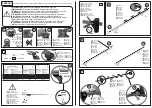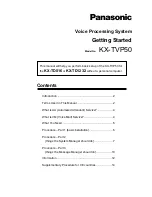
PDF: 4749051511/Source:7788125767
Aptina reserves the right to change products or specifications without notice.
MT9T111_DG - Rev. B 9/10 EN
84
©2007 Aptina Imaging Corporation. All rights reserved.
MT9T111: Developer Guide
Timing Specifications
Preliminary
Standby Modes
The MT9T111 supports three different standby modes:
• Hard standby with shutdown
• Hard standby with memory retention
• Soft standby with state retention
For all hard and soft standby modes, entry can be inhibited by programming the
standby_control register.
Hard Standby with Shutdown Mode
The hard standby with shutdown mode uses STANDBY to shut down digital power
(V
DD
), and ensure the lowest power consumption. All the two-wire serial interface
settings and firmware variables, including patches, will be lost in this mode. Starting up
from this mode is similar to performing a power up. The host will not have to reload the
PLL and clock divider settings, but other sensor settings such as sensor timing, LSC,
CCM, and so forth, will have to be reloaded. The two-wire serial interface will be inactive
and the sensor must be started up by de-asserting STANDBY.
Hard Standby With Memory Retention Mode
Hard standby with memory retention mode (without the loss of variable data) can also
be achieved. This mode stores the variables and state of the sensor before entering
standby (similar to soft standby). The power consumption is lower than that of soft
standby, as internal clocks are turned off, and the two-wire serial interface is inactive.
Since the hard standby with memory retention mode is activated by STANDBY, the
en_vdd_dis_soft register needs to be programmed to indicate the selection of this mode,
before STANDBY is asserted. De-asserting STANDBY causes the sensor to come out of
standby mode. This also causes the sensor to resume operation from the state before the
STANDBY signal was asserted. By default, asserting the STANDBY signal causes the hard
standby mode described above.
The signal sequence for both modes is shown in Figure 48, and the timing for both
modes is shown in Table 32 on page 85.
By default, asserting the STANDBY signal causes the hard standby with shutdown mode
(see Hard Standby with Shutdown Mode) above.
Figure 48:
Hard Standby Signal Sequence Mode
EXTCLK
STANDBY
Mode
t1
t3
t2
STANDBY Asserted
EXTCLK Disabled
EXTCLK Enabled
















































